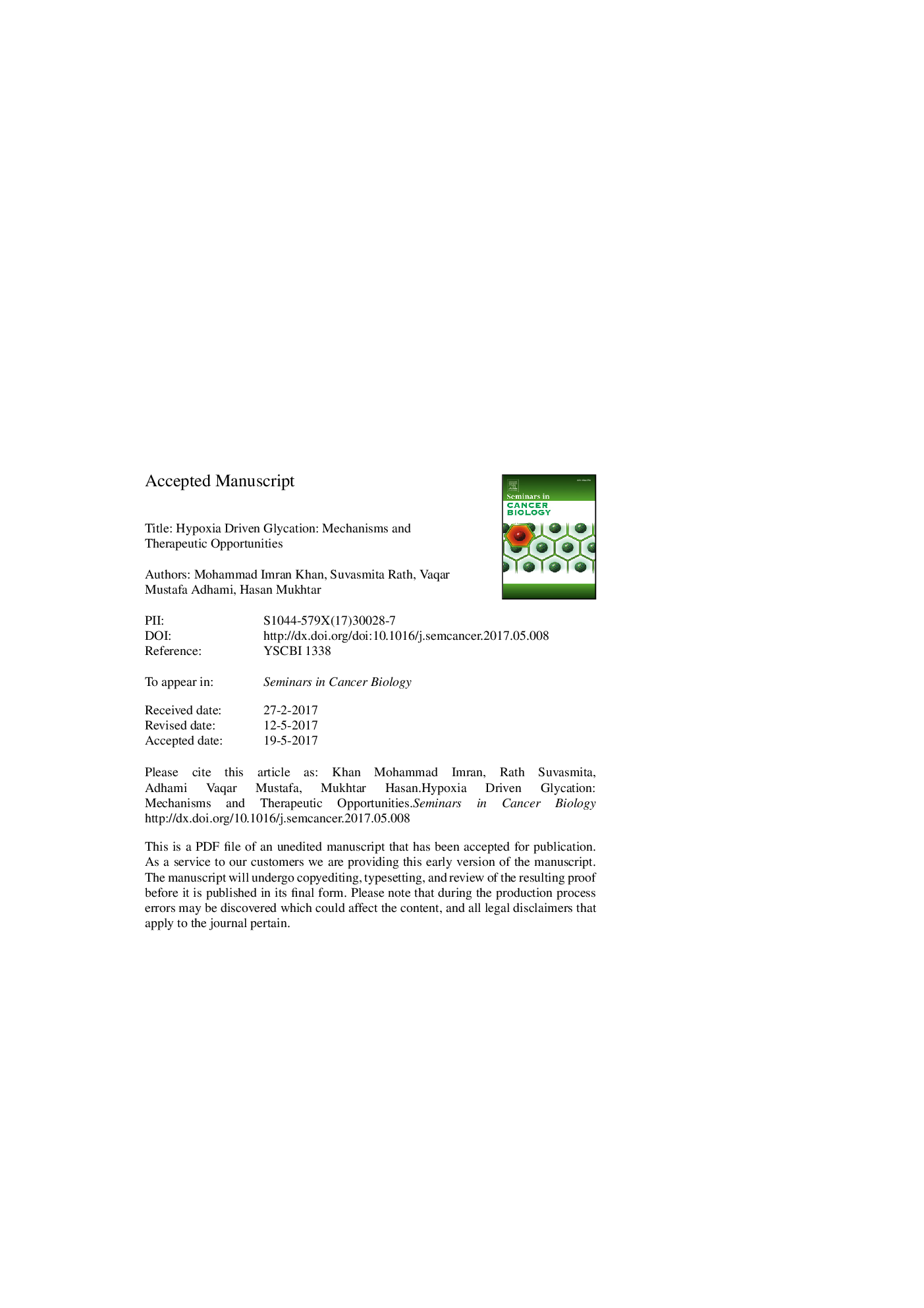| کد مقاله | کد نشریه | سال انتشار | مقاله انگلیسی | نسخه تمام متن |
|---|---|---|---|---|
| 8361773 | 1542520 | 2018 | 39 صفحه PDF | دانلود رایگان |
عنوان انگلیسی مقاله ISI
Hypoxia driven glycation: Mechanisms and therapeutic opportunities
ترجمه فارسی عنوان
گلیکسی رانده شده توسط هیپوکسی: مکانیسم ها و فرصت های درمانی
دانلود مقاله + سفارش ترجمه
دانلود مقاله ISI انگلیسی
رایگان برای ایرانیان
کلمات کلیدی
موضوعات مرتبط
علوم زیستی و بیوفناوری
بیوشیمی، ژنتیک و زیست شناسی مولکولی
زیست شیمی
چکیده انگلیسی
Tumor masses are deprived of oxygen and characterized by enhanced glucose uptake followed by glycolysis. Elevated glucose levels induce non-enzymatic glycosylation or glycation of proteins which leads to accumulation of advanced glycation end products (AGE). These AGE molecules bind to their respective receptors called the receptor for advanced glycation end products (RAGE) and initiate several aberrant signaling pathways leading to onset of diseases such as diabetes, Alzheimer's, atherosclerosis, heart failure and cancer. The role of AGE in cancer progression is being extensively studied in recent years. As cancer cells are hypoxic in nature and adapted to glycolysis, which induces glycation, its effects need to be understood in greater detail. Since AGE-RAGE signaling is involved in cancer progression, inhibition of AGE-RAGE interaction could be a potential therapeutic target. The purpose of this review is to highlight the role of AGE-RAGE interaction in hypoxic cancer cells.
ناشر
Database: Elsevier - ScienceDirect (ساینس دایرکت)
Journal: Seminars in Cancer Biology - Volume 49, April 2018, Pages 75-82
Journal: Seminars in Cancer Biology - Volume 49, April 2018, Pages 75-82
نویسندگان
Mohammad Imran Khan, Suvasmita Rath, Vaqar Mustafa Adhami, Hasan Mukhtar,
